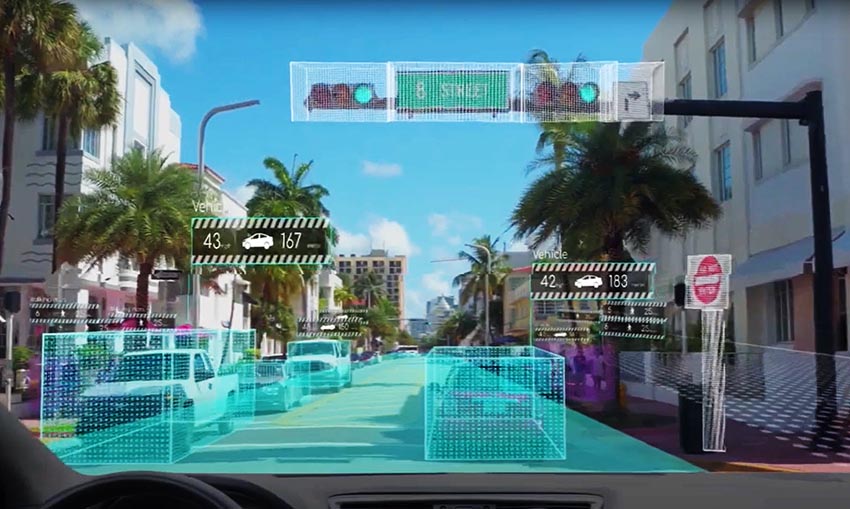Founded in Quebec City, Canada in 2007, LeddarTech has evolved to become a comprehensive end-to-end environmental sensing company by enabling customers to solve critical sensing and perception challenges across the entire value chain of the automotive and mobility market segments. The company is responsible for several innovations in cutting-edge automotive and mobility remote-sensing applications, with over 100 patented technologies (granted or pending) enhancing ADAS and autonomous driving capabilities.
Interview with Pierre Olivier, CTO at LeddarTech.
Easy Engineering: What are the main areas of activity of the company?
Pierre Olivier: LeddarTech is a global leader in Level 1-5 ADAS and AD sensing technology with a primary focus on automotive, off road and industrial vehicle applications. However, LeddarTech also applies it’s LiDAR and Perception technology to the mobility and ITS markets
E.E: What’s the news for 2021 about new products?
P.O: In February, LeddarTech Launched PixSet, the Industry’s First Full-Waveform Flash LiDAR Dataset. The Leddar PixSet is the industry’s first publicly available dataset for ADAS and AD research and development that contains data from a full sensor suite (cameras, LiDARs, radar, IMU), including full-waveform data from a 3D solid-state flash LiDAR sensor.
LeddarVision is a sensor fusion and perception solution that delivers highly accurate 3D environmental models for autonomous cars, shuttles, and more. The full software stack supports all SAE autonomy levels by applying AI and computer vision algorithms to fuse raw data from radar and camera for L2 applications and camera, radar, and LiDAR for L3-L5 applications.

Our Leddar FLM Development Kit will be available later this year. This is significant for a number of reasons: first, was developed in cooperation with our ecosystem partners, including First Sensor, ST Microelectronics and OSRAM, who provide key components of the development kit; second, it is designed to meet the automotive homologation requirements; and finally, it integrates key LeddarTech components and technologies, including our LCA3 System-on-Chip, our LeddarSP signal processing firmware, and our LeddarSteer Digital Beam Steering technology.
E.E: What are the ranges of products?
P.O: LeddarTech has 3 product offerings:
Software
With its LeddarVision™ sensor-fusion and perception platform and its cost-effective, scalable, and versatile LiDAR development solution for automotive-grade solid-state LiDARs based on the LeddarEngine™ platform, LeddarTech enables Tier 1-2 automotive system integrators to develop full-stack sensing solutions for autonomy level 1 to 5
Automotive and Mobility LiDAR Platform
LeddarTech’s patented LeddarEngine SoC and signal processing software deliver the range, resolution, and detection performance required to support the highest levels of autonomous driving for a wide variety of vehicles. LeddarEngine enables Tier-1 suppliers and AD system integrators to design their own differentiated LiDAR solutions by providing the technology, tools, and resources they need to meet the specific requirements of various mobility applications.
The Fastest, Safest Path to Market
Leveraging affordable, readily available technologies, the LeddarEngine shortens development cycles and accelerates the path to high-volume manufacturing to meet the expected ramp-up of mass-market demand.
With its ability to support various types of designs and components, including many options for light sources and wavelengths, photodetectors, illumination, and beam steering methods, LeddarEngine enables and enhances multiple types of solid-state LiDARs.
Patented Automotive-Grade Technology
Developed to meet the automotive industry’s stringent requirements, the LeddarEngine allows customers to design and mass-produce SSLs that meet functional safety (ISO-26262 ASIL-B) and reliability (AEC-Q100) requirements. The LeddarEngine integrates LeddarTech’s proprietary signal acquisition and processing algorithms, which enhances LiDAR’s detection range and accuracy, for optimized performance-to-cost ratios.
Modules and sensors
LeddarTech offers a wide range of high performance 2D and 3D solid-state Flash LiDAR modules to further support the mobility and ITS market.
E.E: At what stage is the market where you are currently active? What can you tell us about market trends?
P.O: Full autonomy projections have been considerably delayed and are now being projected for 2030-2035. What we are currently seeing, is an industry focus and commitment to ADAS solutions, motivated by GSR and EURO NCAP security legislations coming into play in in Europe. This will continue to be influenced by, and increase as, electric vehicles are adopted, as they tend to have more ADAs solutions designed into them. To achieve true Level 4 and Level 5 autonomy, the industry is in agreement that LiDAR technology is essential, we anticipate an introduction of LIDAR in production vehicles by 2025 with greater adoption by 2030-2035.
E.E: What are the most innovative products marketed?
P.O: What is most distinctive and innovative at LeddarTech is that we are the only open-source, raw data sensor platform and we are software agnostic, meaning we work with the full sensor suite: LiDAR, Camera and Radar.
Due to our single architecture, we can support multiple solutions, a major differentiator for us. Also, we enable mass deployment of technology in the automotive and mobility markets.
We allow vehicles to not only see, but understand their environments.

E.E: What estimations do you have for 2021?
P.O: If there’s one thing I learned in the AD industry it is to be prudent in my predictions! However, I see a number of things happening over the next year:
- On the ADAS front, we’ll see continued improvements in both functionality and performance, driven among other things by the EU GSR regulations and the auto manufacturer’s voluntary AEB commitment to NHTSA;
- Level 4 automation development will continue, but will remain in the realm of pilot projects;
- Where we might see the most activity is on the comfort and convenience front, where level 2 solutions such as the GM Super Cruise will be deployed in more models;
- Finally, on the regulatory side, we’ll see more countries adopting regulations to enable the deployment of level 3 privately owned vehicles.

